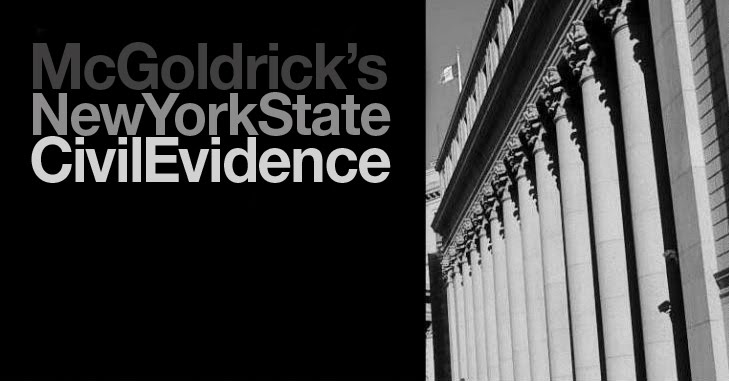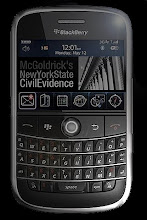The plaintiff's complaint arose out of an incident that occurred when, as a serving NYPD officer, he was injured while attempting to open a faulty window that dislodged and fell on him in the men's locker room located at the 78th Precinct.
The plaintiff alleged that the defendants' liabilities were founded in common-law negligence or alternatively, under the doctrine of res ipsa loquitur, as it was a type of accident that would not have ordinarily occurred in the absence of negligence.
The City of New York filed a motion to dismiss under CPLR 3211 and under CPLR 3212 for summary judgment on the grounds that the plaintiff was unable to prove a prima facie case of negligence against it. The plaintiff filed a cross motion against the City on the basis that the res doctrine applied and the complaint was not one that ought to have been dismissed. Experienced counsel will know that summary judgment is appropriate only when no issues of fact exist. The difficulty is recognizing when this can occur in the context of the evidentiary doctrine of res ipsa loquitur.
Supreme Court, Kings County held:
To prevail on the theory of res ipsa loquitur, a plaintiff must show that (1) the event would not usually occur absent negligence, (2) the instrumentality of the injury was within the defendant's exclusive control, and (3) the plaintiff did not contribute to the cause of the accident (see Dermatossian, id.; Kambat v St. Francis Hosp., 89 NY2d 489, 494 [1997]). In order to rely upon the doctrine, a plaintiff need not conclusively eliminate all other possible explanations for the incident at issue, since it is enough to present evidence from which a reasonable jury could conclude that it is more likely than not that defendant's negligence caused the injury (see Pavon v Rudin, 254 AD2d 143, 145 [1998], citing Kambat, 89 NY2d at 494).
The court, in finding that the plaintiff had failed to establish that the City of New York had exclusive control, made further observations about the doctrine:
In order to overcome the rule that res ipsa loquitur will not apply where an instrumentality is generally under the control of persons other than the defendant, a plaintiff must demonstrate that the defendant had control of sufficient exclusivity to fairly rule out the chance that the alleged defect was caused by some agency other than the defendant's negligence (see Dermatossian v New York City Tr. Auth., 67 NY2d at 228). Indeed, in the absence of any admissible proof, where the plaintiff's injury occurred in a facility which was open to, and used extensively by, over 200 police officers and numerous other employees, plaintiff fails to adequately refute the possibility that the subject window had been damaged by one of the many individuals that had access to the window each day. The traffic inside the locker room in the instant case is analogous to those situations where the allegedly defective instrumentality is open to the public, thereby obviating the element of "exclusive" control (see Ebanks v New York City Transit Authority, 70 NY2d 621, 623 [1987]; see also Dermatossian, 67 NY2d at 228). Plaintiff himself admitted to opening the subject window up to 50 times prior to the date of the accident, and he also testified that it was common for other police officers to open the subject window for ventilation because the temperature inside the locker room was often very warm. Plaintiff's testimony makes clear the fact that, subsequent to the installation of the subject window and prior to plaintiff's accident, numerous individuals had access to and operated the subject window. Under these circumstances, plaintiff cannot establish that City had the exclusive control necessary for the application of res ipsa loquitur. Similarly, plaintiff also cannot establish that the subject window was in the exclusive control of City at the time of the installation, since employees of both ECC and Arrow had access to the window at that time. Accordingly, plaintiff is not entitled to rely on res ipsa loquitur as a theory of liability against City
Even if the plaintiff had have established this element, he would have faced another problem:
...even if plaintiff had established that the theory of res ipsa loquitur was applicable, his reliance upon the doctrine in support of his cross motion for summary judgment is misplaced, since it has been held that:
"the doctrine is a rule of evidence which merely provides a permissible inference of negligence rather than a presumption... Therefore, application of the doctrine as a basis for awarding summary judgment is inappropriate..."
In Morejon v Rais Constr. Co., (7 NY3d 203 [2006]), the Court of Appeals declined to hold that summary judgment could never be appropriate in a res ipsa loquitur case, instead finding that it is justified "only in the rarest of res ipsa loquitur cases . . . when the plaintiff's circumstantial proof is so convincing and the defendant's response so weak that the inference of defendant's negligence is inescapable." In considering plaintiff's initial burden to make a prima facie showing of his entitlement to judgment as a matter of law, this court concludes that the instant case is not one of those "rare" cases where the plaintiff, relying on res ipsa loquitur, has shown not only the absence of any material issue of fact but also that the inference of negligence is "inescapable."
The Court consequently denied that part of the plaintiff's cross motion relating to a finding of liability based solely upon the res ipsa loquitur doctrine of evidence.
In Morejon v Rais Constr. Co., (7 NY3d 203 [2006]), the Court of Appeals declined to hold that summary judgment could never be appropriate in a res ipsa loquitur case, instead finding that it is justified "only in the rarest of res ipsa loquitur cases . . . when the plaintiff's circumstantial proof is so convincing and the defendant's response so weak that the inference of defendant's negligence is inescapable." In considering plaintiff's initial burden to make a prima facie showing of his entitlement to judgment as a matter of law, this court concludes that the instant case is not one of those "rare" cases where the plaintiff, relying on res ipsa loquitur, has shown not only the absence of any material issue of fact but also that the inference of negligence is "inescapable."

